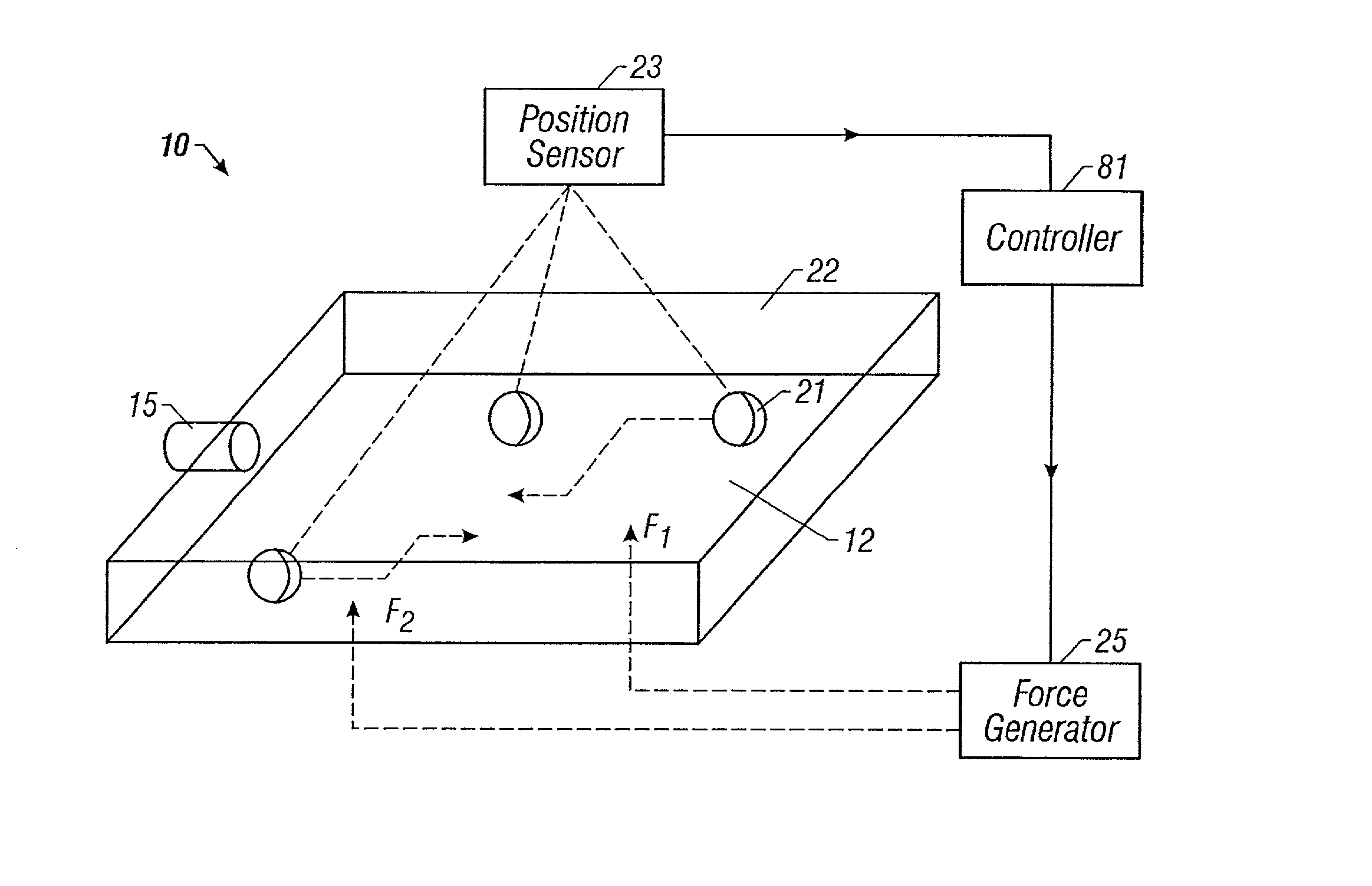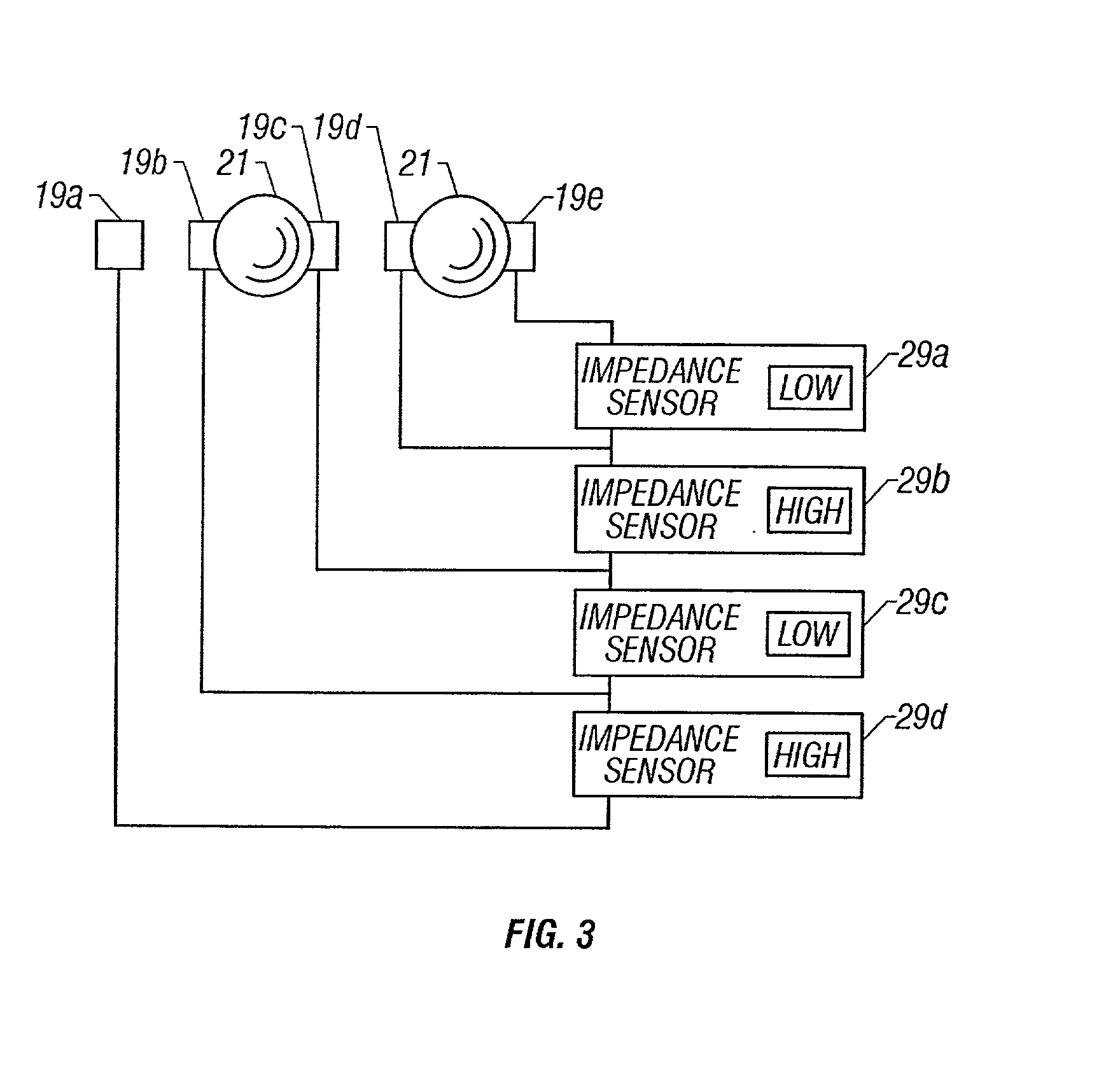Method and apparatus for programmable fluidic processing
- Summary
- Abstract
- Description
- Claims
- Application Information
AI Technical Summary
Problems solved by technology
Method used
Image
Examples
example 1
[0133] Aqueous materials have been compartmentalized to form packets using hydrophobic liquids as a partitioning medium. Partitioning mediums so used have included decane, bromodocane, mineral oil, and 3 in 1.TM. oil. Packets have been formed by briefly sonicating about 3 milliliters of the hydrophobic liquid to which had been added 20 to 50 microliters of aqueous medium. Aqueous media tested have included deionized water, tap water (electrical conductivity of about 40 mS / m) and phosphate buffered saline (PBS) solution.
example 2
[0134] Aqueous packets suspended in mineral oil, bromodoecane and 3 in 1.TM. oil have been collected by dielectrophoresis by applying sinusoidal signals to gold-on-glass electrode arrays having 20, 80 and 160 micron spacing, respectively. The 20-micron electrode array consisted of parallel line electrodes (20 microns in width and spacing). The 80 and 160 micron electrode arrays were of the interdigitated, castellated geometries. Aqueous packets were collected at electrode edges or tips when AC voltage signals between 100 Hz and 20 MHz were applied. Applied voltages were from 10 to 100 V peak-to-peak. The formation of pearl-chains of water packets has also been observed.
example 3
[0135] Aqueous packets in hydrophobic suspension have been brought together and fused under the influence of dielectrophoretic forces on the same electrode arrays used in Example 2.
PUM
| Property | Measurement | Unit |
|---|---|---|
| Length | aaaaa | aaaaa |
| Length | aaaaa | aaaaa |
| Force | aaaaa | aaaaa |
Abstract
Description
Claims
Application Information
 Login to View More
Login to View More - R&D
- Intellectual Property
- Life Sciences
- Materials
- Tech Scout
- Unparalleled Data Quality
- Higher Quality Content
- 60% Fewer Hallucinations
Browse by: Latest US Patents, China's latest patents, Technical Efficacy Thesaurus, Application Domain, Technology Topic, Popular Technical Reports.
© 2025 PatSnap. All rights reserved.Legal|Privacy policy|Modern Slavery Act Transparency Statement|Sitemap|About US| Contact US: help@patsnap.com



